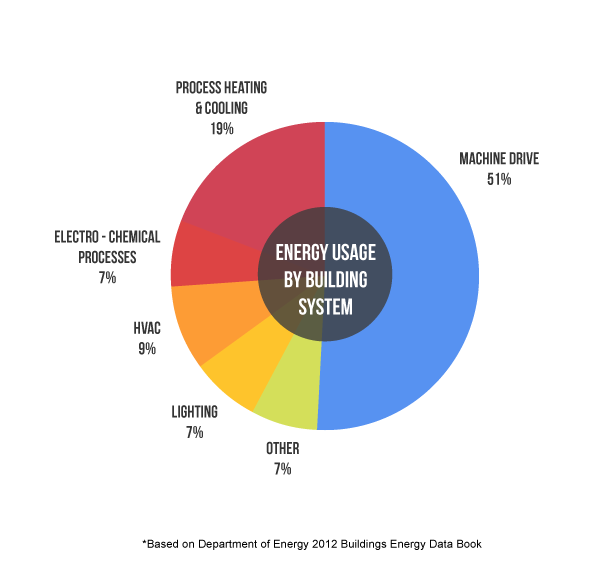|
January 2014
Interview
AutomatedBuildings.com
|
[an error occurred while processing this directive]
(Click
Message to Learn More)
|
 EMAIL
INTERVIEW
Brian Turner – and Ken
Sinclair
EMAIL
INTERVIEW
Brian Turner – and Ken
Sinclair
Brian Turner,
President, Controlco
Brian Turner, LEED-AP
BD&C, is President of Controlco, a leading-edge building
automation solution provider and enterprise system integration firm. He
provides hands-on expertise to architects, engineers and building
owners to design and implement integrated building systems.
How Building Managers can
Visualize Big Data
Big Data specifically means better ways to maintain equipment and more
intelligent fault detection and prediction, or smarter ways to approach
diagnostics as a whole.
Sinclair:
What is “Big Data” as far as the
building
automation industry is concerned?
Turner: Big Data is
kind of a buzz word that’s
floating around a
lot lately. When it’s used in the media, it’s typically referencing all
the information bits that Internet giants like Google and Facebook
collect every second. But it’s starting to stand for “business
intelligence” on a broad scale, representing the ability to analyze
mountains of computer-readable information and turn them into
meaningful chunks that humans can understand, so that decision makers
have the ability to make really informed choices about their business,
whatever it may be.
For us in the building automation
industry, Big Data
specifically means better ways to maintain equipment and more
intelligent fault detection and prediction, or smarter ways to approach
diagnostics as a whole.
Sinclair:
What does Big Data look like?
Turner: It starts
out as tons of code that represents
everything that
building systems are doing at any given time. All of this information
is filtering through Niagara as it runs the controls, but until now,
there haven’t been too many ways to really make sense of that
information. To solve this problem and really start playing with
building data, we created DataEye Pro, which works on top of Niagara to
create meaning out of all those data chunks.
While Niagara does a great job of
normalizing data, this product goes one step further and models that
data. For example, in
the model, a rooftop air conditioning unit is a rooftop
unit regardless of the manufacturer, communication protocol, or
controller manufacturer; a lighting circuit is a lighting circuit
regardless of the technology in the lighting fixture or lighting
control panel. With this baseline understanding, the information in the
database is modeled in a way that is exponentially
more useful, because a standardized meaning is attached to the
information bits.

Sinclair: So DataEye Pro is a piece of software?
Turner: Yes, it’s a
software extension for the
NiagaraAX Framework that
gives building managers access to their energy systems’ current and
historic data.
Sinclair:
Why is it important that the
program access historic data if it is
meant to be giving real-time information?
Turner: Well, in
order to know if a system is working
properly, we must
understand how it normally works under the current conditions. This
means the data engine must have some historical perspective to compare
against the real-time values. As an extension of the NiagaraAX
Framework, DataEye Pro accesses the Niagara history database for each
of the data points in the model and then executes against the data
model to make smart decisions. For example, with a heating system, the
historic data shows what usage rates were on previous days with similar
weather conditions. To determine an appropriate heating level for
today, the data model would examine that historic data and compare that
to weather information for this day and come up with a reasonable
figure. All of this is then displayed graphically.
Sinclair:
Graphically through charts?
Turner: Charts and
graphs, for the most part. It has
an HTML5 interface and
we have a whole User Experience team that develops really
state-of-the-art graphics to visually interpret the data. The goal is
to take all of the code and turn it into something that building
managers can glance at and fully understand. This is also important
when it comes to managers who are responsible for a portfolio of
buildings. The interface needs to look the same for every building, so
that time isn’t lost learning a new platform at every stop. This works
because the data model is scalable, so it can be applied to an almost
infinite number of buildings, delivering consistent results every time.
And it can be run on the cloud, whether it is hosted by a data center
in New York or on a virtual server in the corporate data center.
Sinclair:
What happens if something goes
wrong in one of the control systems?
Turner: The data
model also facilitates fault
detection. So, once
information is gathered, DataEye Pro can trigger an alarm, set off an
additional formula, annunciate a graphic, email a building engineer,
send an SMS text message, or execute other logic built in NiagaraAX.
The beauty is that Big Data and smart
data models
really make it possible to analyze, monitor and control any piece of an
automated building system.
Sinclair:
What happens if something goes
wrong in one of the control systems?
Turner: The data
model also facilitates fault
detection. So, once
information is gathered, DataEye Pro can trigger an alarm, set off an
additional formula, annunciate a graphic, email a building engineer,
send an SMS text message, or execute other logic built in NiagaraAX.
The beauty is that Big Data and smart
data models
really make it possible to analyze, monitor and control any piece of an
automated building system.
[an error occurred while processing this directive]Sinclair:
What would you say to Big Data
skeptics or people who aren’t ready
to make such a big shift in the way they operate their systems?
Turner: We all know
that commercial and industrial
buildings eat up a
substantial amount of the United States’ overall energy consumption.
It’s also fair to say that the mechanical and lighting control systems
operating in these buildings generally operate less efficiently than
modern systems make possible. These are two truths we kind of just
accept in the industry. But it doesn’t have to be like that. There are
really intuitive solutions available that are cost effective and open
up so many possibilities for automated building systems and the people
who manage them. It’s no longer a question of if Big Data will hit our
industry, but when. Implementing a system like DataEye Pro at this
point definitely puts buildings a bit ahead of their time, but the
speed of innovation keeps getting faster, so it’s getting harder to
justify waiting it out.
About
the Author
Brian Turner, LEED-AP BD&C, is President of Controlco, a leading-edge building automation solution
provider and enterprise system integration firm. He provides hands-on
expertise to architects, engineers and building owners to design and
implement integrated building systems.
Joining the Oakland, California-based company in 1996 as part of the
Control Systems Sales team, Turner has sold and supported the
industry’s highest quality control systems for commercial and
industrial buildings around the world. He became Vice President of the
Professional Services division of Controlco in 2006 after showing
leadership in developing a technical support network to promote
contractor capabilities and user awareness.
Today, Turner leads a team of engineers and user experience designers
in developing a new SaaS solution that will open up building data for
energy managers to optimize their control systems, utilizing the most
advanced data modeling, fault detection and prediction technologies
currently available in the industry. As an internationally
recognized expert in the field, Turner has helped professionals in the
building industry optimize their controls and make their processes more
efficient. He has participated in product studies for manufacturers and
has made presentations at industry meetings and events to international
audiences including building owners, distributors, manufacturers and
system integrators. Turner earned his BS degree in Human Factors
Psychology from California State University, East Bay, and later
completed his MBA with an emphasis in Technology Management from the
University of Phoenix.
footer
[an error occurred while processing this directive]
[Click Banner To Learn More]
[Home Page] [The
Automator] [About] [Subscribe
] [Contact
Us]
EMAIL
INTERVIEW
Brian Turner – and Ken
Sinclair
